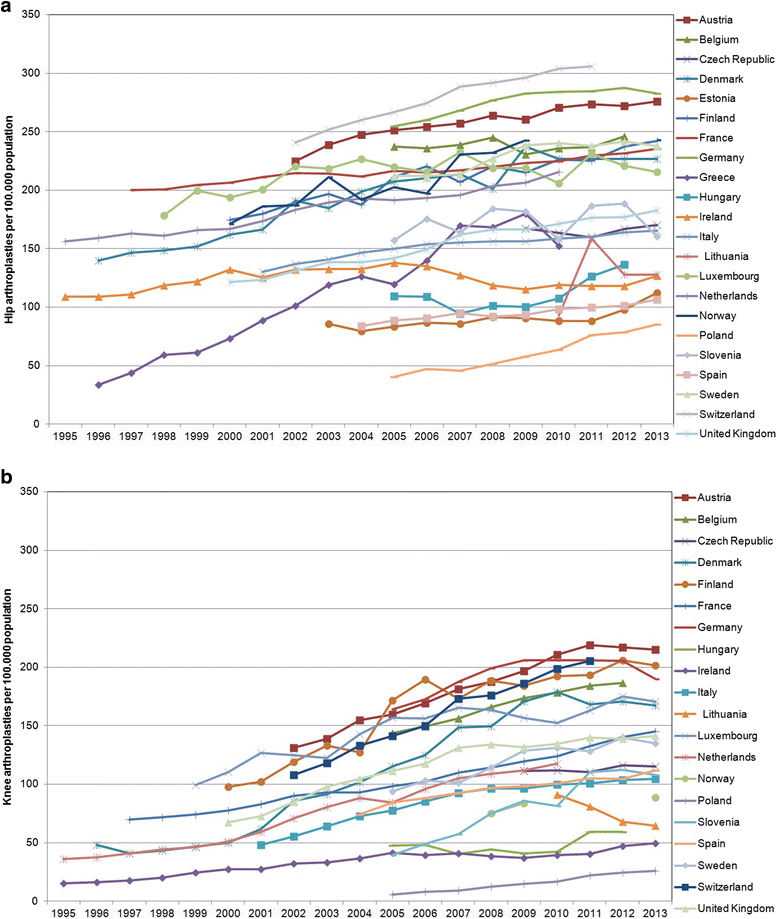The role of national registries in improving patient safety for hip and knee replacements
- PMID: 29037237
- PMCID: PMC5644143
- DOI: 10.1186/s12891-017-1773-0
The role of national registries in improving patient safety for hip and knee replacements
Abstract
Background: The serious adverse events associated with metal on metal hip replacements have highlighted the importance of improving methods for monitoring surgical implants. The new European Union (EU) device regulation will enforce post-marketing surveillance based on registries among other surveillance tools. Europe has a common regulatory environment, a common market for medical devices, and extensive experience with joint replacement registries. In this context, we elaborate how joint replacement registries, while building on existing structure and data, can better ensure safety and balance risks and benefits.
Main text: Actions to improve registry-based implant surveillance include: enriching baseline and diversifying outcomes data collection; improving methodology to limit bias; speeding-up failure detection by active real-time monitoring; implementing risk-benefit analysis; coordinating collaboration between registries; and translating knowledge gained from the data into clinical decision-making and public health policy.
Conclusions: The changes proposed here will improve patient safety, enforce the application of the new legal EU requirements, augment evidence, improve clinical decision-making, facilitate value-based health-care delivery, and provide up-to-date guidance for public health.
Conflict of interest statement
Ethics approval and consent to participate
Not required.
Consent for publication
Not applicable.
Competing interests
DP-A is a member of the Editorial Board of BMC Musculoskeletal Disorders. The other authors have no competing interests.
Publisher’s Note
Springer Nature remains neutral with regard to jurisdictional claims in published maps and institutional affiliations.
Figures

References
-
- OECD/EuropeanUnion . Hip and knee replacement. Paris: OECD publishing; 2014.
MeSH terms
Grants and funding
LinkOut - more resources
Full Text Sources
Other Literature Sources
Medical

